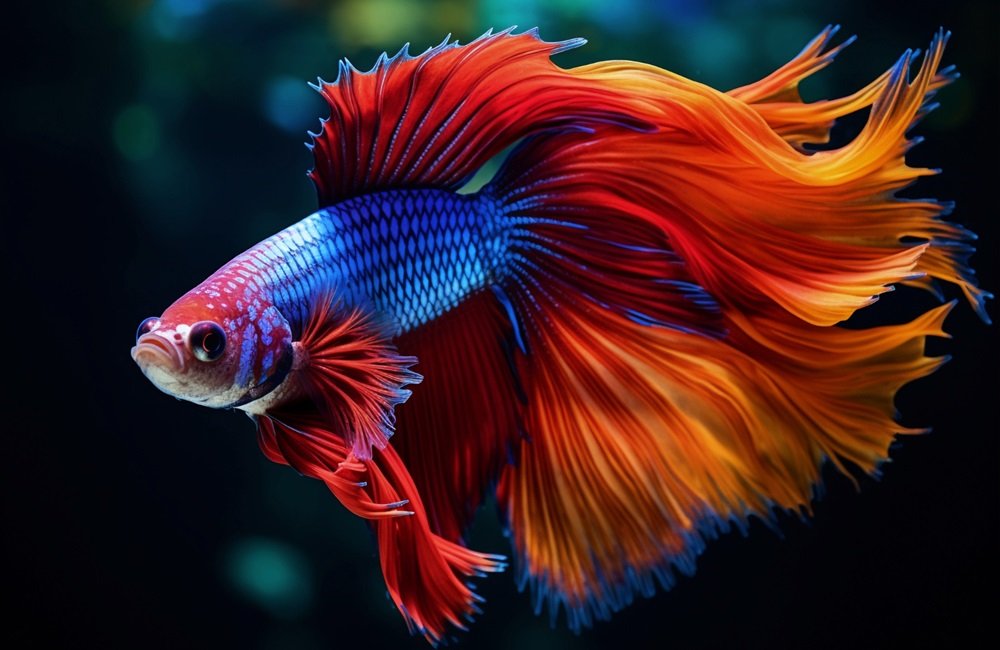Understanding the appearance of baby guppies, also known as fry, is crucial for any aquarist who wants to successfully raise them. Recognizing the unique characteristics of guppy fry helps in identifying any potential health issues and ensures proper care for these delicate creatures.
What Do Baby Guppies Look Like?
Guppy fry are incredibly tiny when they are first born, measuring only a few millimeters in length. They are transparent or translucent, allowing you to see their internal organs. This transparency makes it easier to monitor their development and health.
Key Features of Guppy Fry
-
Size:
Tiny, around 2-3 millimeters long at birth
-
Color:
Translucent or transparent, with faint outlines of their adult coloration
-
Body Shape:
Oval-shaped with a small tail fin that is proportionally larger than their body
-
Eyes:
Large and prominent, black in color
-
Mouth:
Small and located at the front of their head
As guppy fry grow, they gradually develop their characteristic vibrant colors and patterns.
What Do Baby Guppies Look Like?
Guppies, those vibrant and playful fish, are a popular choice for both beginner and experienced aquarists. One of the most fascinating aspects of keeping guppies is witnessing their life cycle, from tiny fry to colorful adults. But what exactly do baby guppies, also known as fry, look like? This article delves into the appearance of guppy fry, exploring their unique features and developmental stages.
Appearance of Newborn Guppy Fry
Newly hatched guppy fry are incredibly tiny, measuring just a few millimeters in length. They are transparent, almost see-through, allowing you to glimpse their developing organs. Their bodies are elongated and slender, resembling miniature versions of adult guppies.
Key Features of Newborn Fry:
* **Transparent Body:** Their translucent bodies reveal their internal organs, including their developing swim bladder, heart, and digestive system.
* **Small Size:** They are incredibly small, typically less than 5 millimeters long.
* **Elongated Shape:** Their bodies are long and slender, with a pointed snout and a slightly rounded tail.
* **Developing Fins:** Their fins are rudimentary and barely visible at birth, but they will rapidly develop over the next few weeks.
* **Mouth Opening:** Their mouth opening is small and located at the front of their head.
Developmental Stages of Guppy Fry
Guppy fry undergo a remarkable transformation as they grow and mature. Their appearance changes significantly over the course of several weeks. (See Also: What Does The Mythic Goldfish Do In Fortnite)
Stage 1: First Few Days
During the first few days after hatching, fry remain near the surface of the water, relying on their yolk sac for nourishment. They are extremely vulnerable at this stage and require a safe and stable environment.
Stage 2: Yolk Sac Absorption (Days 3-7)
As the yolk sac is gradually absorbed, fry begin to develop their feeding apparatus. Their mouths become larger, and they start to explore their surroundings, searching for food.
Stage 3: Initial Feeding (Days 7-14)
By day seven, fry are capable of actively feeding on infusoria, microscopic organisms found in the water column. Their bodies become more pigmented, and their fins begin to develop more noticeably.
Stage 4: Juvenile Stage (Weeks 2-4)
During the juvenile stage, fry continue to grow rapidly, their bodies becoming more robust and their fins fully developed. They start to exhibit the characteristic colors and patterns of their adult counterparts.
Stage 5: Sexual Maturity (6-8 Weeks)
Guppies reach sexual maturity relatively quickly, typically within 6 to 8 weeks. Females become noticeably larger and develop a gravid spot, a dark spot on their abdomen that indicates pregnancy. Males develop distinctive gonopodia, modified anal fins used for transferring sperm. (See Also: How Much Light For Betta Fish)
Factors Influencing Fry Appearance
Several factors can influence the appearance of guppy fry, including:
* **Genetics:** The coloration and patterns of guppy fry are largely determined by their genes, inherited from their parents.
* **Environment:** Water quality, temperature, and lighting can all affect fry growth and development.
* **Nutrition:** A balanced diet is essential for healthy fry growth and coloration.
Conclusion
Baby guppies, or fry, are fascinating creatures that undergo a remarkable transformation from tiny, transparent beings to vibrant, colorful adults. Understanding their appearance and developmental stages can help you provide optimal care for these captivating fish. By creating a suitable environment and providing a nutritious diet, you can ensure that your guppy fry thrive and develop into healthy, beautiful fish.
Frequently Asked Questions about Baby Guppies
What do baby guppies look like?
Baby guppies, also known as fry, are tiny versions of their adult counterparts. They are translucent or have a faint, pale coloration, and their stripes or markings may be less pronounced than those of adult guppies. They have a small, round body and a long, flowing tail fin.
How big are baby guppies when they are born?
Baby guppies are very small when they are born, typically around 1/4 to 1/2 inch long. They grow rapidly, however, and can reach their adult size within a few months.
What color are baby guppies?
Baby guppies are usually transparent or have a pale, almost colorless appearance. Their adult coloration develops gradually over time as they grow. (See Also: Can Koi Mate With Goldfish)
How long does it take for baby guppies to grow up?
Baby guppies grow quickly and can reach their adult size within 2 to 3 months. However, they may take a little longer to develop their full adult coloration.
How can I tell the difference between male and female baby guppies?
It can be difficult to tell the difference between male and female baby guppies at a very young age. As they mature, the males will develop a more pronounced anal fin, which will be elongated and pointed, while the females will have a shorter, rounded anal fin.


